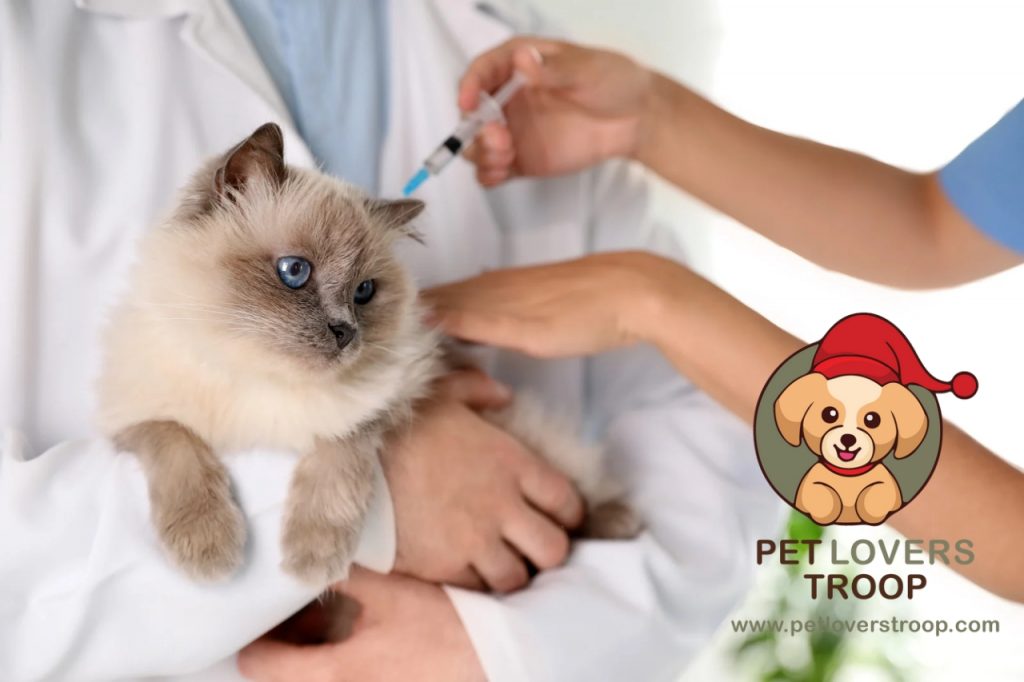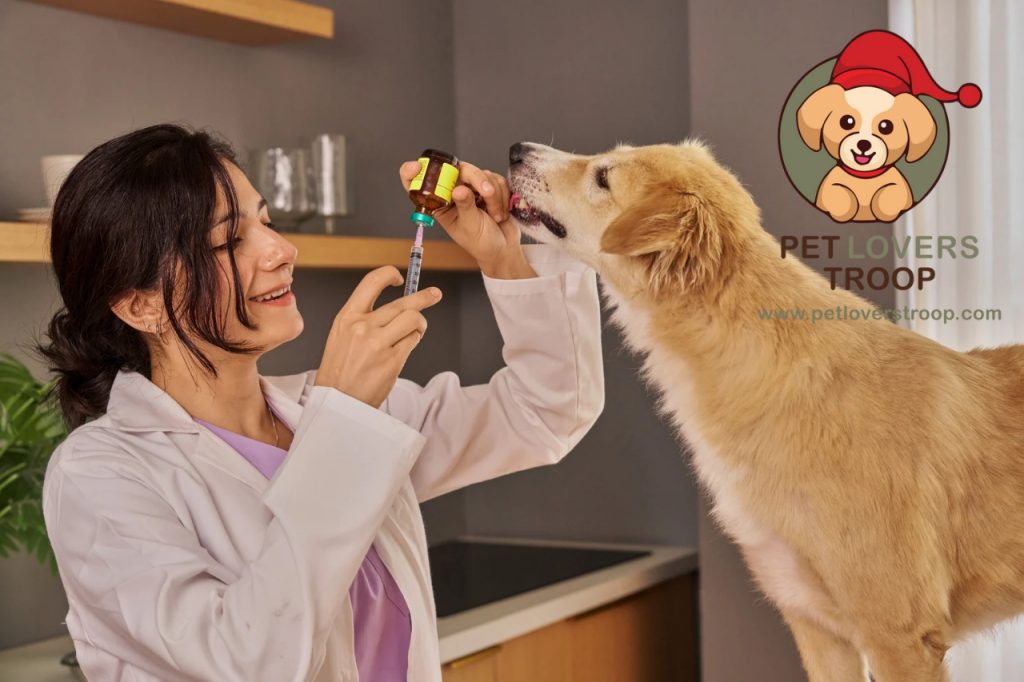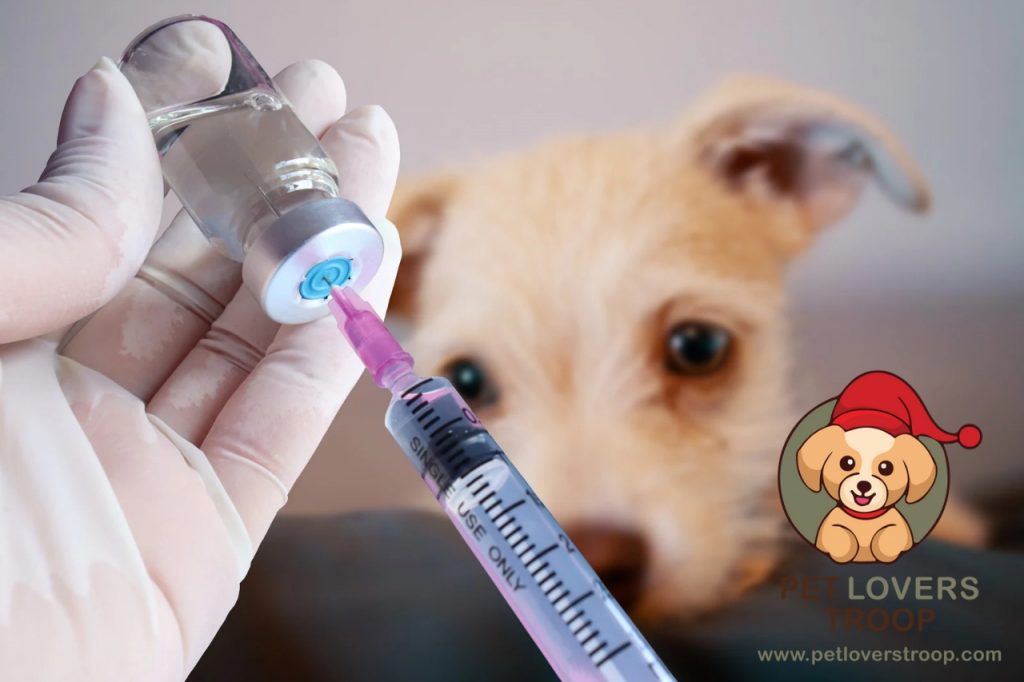When Milo bounded into Anna’s life, he was a clumsy black Labrador puppy with ears too big for his head and a habit of tripping over his own paws. Like most first-time pet parents, Anna thought she was ready for everything: food bowls, squeaky toys, a soft bed in the corner, and of course, an endless supply of belly rubs.
But then came Milo’s first trip to the vet.
Anna sat in the waiting room clutching a wriggling puppy, scanning the posters on the wall. When the nurse finally called them in, she rattled off a list of pet vaccines: distemper, parvo, adenovirus, rabies.
Anna blinked, overwhelmed. The names sounded like something out of a science textbook, not part of raising a happy puppy. She caught herself wondering: Does Milo really need all of these?
That’s the moment Anna realized that pet ownership wasn’t just about the fun parts. It was about protecting Milo from dangers she couldn’t always see. Vaccines, she would come to learn, weren’t just items on a bill.
Read more: Equine Infectious Anemia in Horses: Recognizing and Preventing – June 2025
They were Milo’s invisible armor, the shield that would let him grow up safe, healthy, and full of energy.

What Are Pet Vaccines?
Pet vaccines are medical preparations that train a dog’s or cat’s immune system to fight specific diseases. By introducing safe, inactive parts of viruses or bacteria, vaccines prepare pets to resist infections like rabies, parvo, and distemper. They act as invisible shields, protecting animals from deadly, preventable illnesses.
Read more: The Flea Fiasco: How Long can these Pesky Pests Survive Without their Favourite Hosts?
Core vs. Non-Core Pet Vaccinations
Milo’s vet explained vaccines in a way that clicked instantly. Imagine you’re packing for a trip. Everyone, no matter where they’re going, needs clothes. That’s the core vaccines: the absolute essentials that protect against widespread, deadly diseases.
For dogs like Milo, that meant rabies, distemper, and parvo. For cats, it was rabies plus the FVRCP combo that shields against rhinotracheitis, calicivirus, and panleukopenia.
Then there are the non-core vaccines. These aren’t unnecessary; they’re just situational. A dog that loves lakes and puddles might need leptospirosis coverage. A pup who hikes in tick-heavy areas might get the Lyme vaccine.
An indoor-only cat may skip feline leukemia shots, while an outdoor explorer might need them.
For Milo, who couldn’t resist splashing in muddy ponds and charging through tall grass, the vet recommended both leptospirosis and Lyme vaccines. Meanwhile, Anna’s neighbor’s house cat, who spent most of her days curled on a sunny windowsill, only needed her core shots.
This simple analogy made everything less intimidating. Vaccines weren’t a mystery list of chemicals. They were Milo’s suitcase, packed with everything he needed to stay safe on his life’s adventures.
Read more: Types of Pet Vaccinations
What Vaccines Do Puppies and Kittens Need
Raising a young pet is like chasing a toddler: messy, exhausting, and full of curiosity. Puppies chew, kittens climb, and both seem determined to taste-test the entire world. What Anna hadn’t realized before was that their immune systems are as immature as their behavior. That’s why the first year is packed with a series of pet vaccines, not just one-and-done shots.
For Milo, the vet scheduled a series of appointments starting at just 7 weeks old. Each visit built up his defenses a little more. His puppy series included:
- Distemper, a virus that can cause everything from coughing to seizures.
- Parvo, the notorious puppy killer that causes severe diarrhea and dehydration.
- Adenovirus, which protects against infectious hepatitis.
- And of course, rabies, which is both fatal and required by law in many places.
Kittens go through their own series, starting around 6–8 weeks. Their FVRCP combo guards against feline viral rhinotracheitis, calicivirus, and panleukopenia. Rabies is added as well.
One of Anna’s neighbors learned the hard way what skipping even one dose can mean. She assumed her kitten was “safe enough” indoors and stopped the series early. Then one afternoon, a stray cat wandered into the yard. Within weeks, the kitten fell sick with panleukopenia and didn’t survive. It was heartbreaking, and preventable.
Read more: LED Dog Collars: Enhancing Nighttime Visibility and Safety for Your Pet- August 2025
Milo, on the other hand, never missed a shot. Anna made sure of it.

Rabies, Distemper, And Parvo Vaccines Explained
Some names, rabies, distemper, parvo, float around so much that they lose their weight. But once Anna understood what they really were, she knew skipping wasn’t an option.
- Rabies: Always fatal once symptoms appear, and transmissible to humans. It’s why rabies vaccines are legally mandated in many regions.
- Distemper: A virus that attacks the nervous and respiratory systems. Survivors, if they make it, often carry lifelong neurological damage.
- Parvo: The nightmare of every puppy owner. Aggressive, expensive to treat, and often deadly even with the best care.
For cats, the “big bads” include panleukopenia (very similar to parvo), herpesvirus, and calicivirus. These diseases are still very real threats, not relics of the past.
Whenever someone asked Anna, “Do pets really need vaccines?” she thought back to these descriptions. The answer was no longer in doubt.
How Often Should Pets Get Vaccinated?
At first, Anna dreaded the idea of yearly shots forever. But the schedule isn’t as strict as many imagine.
- Rabies is usually given yearly at first, then every three years depending on local laws.
- Distemper/parvo combo (DHPP) is repeated as boosters every 1–3 years after the puppy series.
- FVRCP for cats also moves to every 1–3 years after the kitten series.
- Non-core vaccines like Bordetella, Lyme, or leptospirosis are typically yearly, sometimes more if risk is high.
The key takeaway? Pet vaccine schedules aren’t one-size-fits-all. Milo’s vet customized his based on his habits, travel, and exposure. That flexibility made Anna feel less like she was just checking boxes and more like she was making thoughtful choices for her dog’s life.
Read more: 5 Dog-Friendly Hotels in NYC: Comfortable Stays for You and Your Pet – March 2025
Side Effects of Pet Vaccines
The first time Milo got his shots, Anna hovered nervously. Would he yelp? Get sick?
After the appointment, Milo came home, ate half his dinner, and then flopped into a deep nap. He seemed groggier than usual and had a little tenderness where the injection went in. By the next morning, he was back to zooming around the yard like nothing had happened.
Most side effects are like this: mild, short-lived, and not worth losing sleep over. Rarely, more serious reactions occur, swelling, vomiting, or difficulty breathing. That’s when a quick call to the vet becomes urgent.
Read more:The Benefits of Pet Insurance: Is It Worth It? – March 2025
But here’s the trade-off Anna kept in mind: a sleepy puppy for 24 hours versus the devastation of parvo or distemper. The choice was obvious.

Can Vaccinated Pets Still Get Sick?
Yes, but vaccines change the outcome.
A vaccinated dog exposed to parvo might still catch it, but the illness will likely be far less severe, with survival odds dramatically higher. A vaccinated cat might pick up a respiratory bug, but instead of ending up hospitalized, she could recover at home with minimal care.
Read more: Best Pet Reptiles for Beginners: Top 5 Easy-to-Care-For Species
It’s like seatbelts in cars: they don’t prevent accidents, but they make accidents far less deadly. Vaccines serve the same purpose.
The Cost Question: Budgeting for Pet Vaccines
Money was another hurdle Anna had to face. The numbers added up quickly, especially during Milo’s first year. On average, his puppy series cost between $75 and $150, spread over several appointments. Boosters ran $20–50 each, and rabies was typically $15–25.
It stung sometimes, especially when bills stacked up with food, toys, and vet visits. But Anna found ways to manage:
- She learned that some shelters included vaccines in their adoption fees.
- Local clinics occasionally offered discounted vaccine days.
- And when funds were tight, her vet helped her prioritize the essentials first, rabies and the core series, while spacing out non-core vaccines until she could afford them.
Read more: Pet First Aid Basics: Essential Knowledge for Every Dog Owner -August 2025
Skipping vaccines entirely, though, was never an option.
Is It Safe To Skip Pet Vaccinations?
One of Anna’s biggest lessons with Milo was learning to speak up at the vet’s office. At first, she hesitated, worried she’d sound like she didn’t trust their expertise. But the more questions she asked, the more respect she earned.
The most useful ones were:
- Which vaccines are core for Milo?
- Which optional ones do you recommend, and why?
- How often does he really need this shot?
- Are titer tests an option to check his immunity instead of automatic boosters?
Good vets welcome these conversations. They want owners to understand, not just nod along.
Conclusion
So, what shots does your dog or cat really need? Milo’s story makes it simple. Core vaccines like rabies, distemper, parvo (for dogs), and FVRCP plus rabies (for cats) are non-negotiable. On the other hand, non-core vaccines depend on lifestyle, but for many pets, they’re well worth it.
Yes, pet vaccines cost money. Yes, they sometimes cause mild side effects. But when you stack that against the devastation of losing a pet to parvo, distemper, or rabies, the choice is obvious.
Vaccines aren’t about rules or invoices. They’re about love, about protecting the creatures who trust us completely. Every shot Milo received gave Anna peace of mind, and every wag of his tail reminded her it was worth it.
When someone asks her now if vaccines are really necessary, she doesn’t hesitate. She thinks of Daisy, she thinks of Milo, and she says: Yes. Every single one that matters.
Read more: The Benefits of Pet Insurance: Is It Worth It? – March 2025
FAQs
1. Is it safe to skip pet vaccinations?
No. Diseases like rabies, distemper, and parvo are still widespread and deadly. Skipping vaccines leaves your pet vulnerable.
2. How often should pets get vaccinated?
After the initial series, most core pet vaccines move to a 1–3 year schedule. Non-core vaccines often require yearly boosters.
3. What pet vaccines do puppies and kittens need?
Puppies: distemper, parvo, adenovirus, and rabies.
Kittens: FVRCP combo and rabies.
4. Can vaccinated pets still get sick?
Yes, but usually with much milder symptoms and far better survival odds compared to unvaccinated pets.

